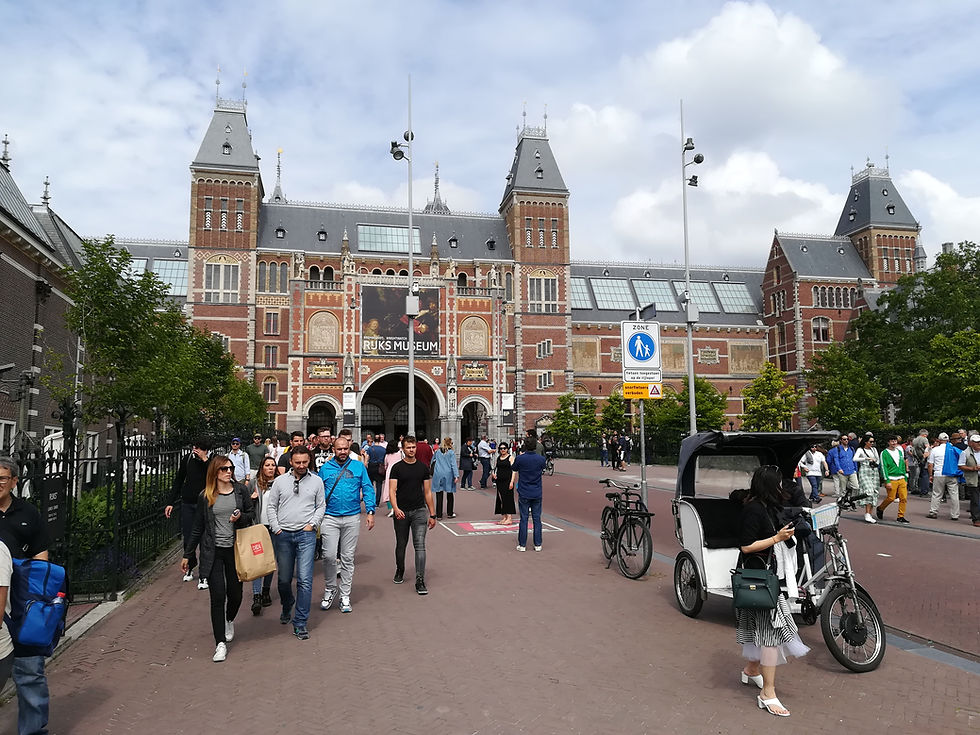Domestic tourism takes a post-covid hit: growing inequality to blame?
- Greg Richards

- Aug 28, 2023
- 3 min read
After Covid many places hoped that a new form of tourism would emerge, with more domestic visitors, more sustainable travel and less tourist pressure. However, the post-covid period brought a boom in travel, and the appearance of ‘revenge tourism’ – making up for lost travel opportunities during the pandemic. The Economist proclaimed “Take that, covid! “Revenge” tourism takes off”.
Although this boom initially also involved domestic tourists, evidence is now emerging from a number of places that instead of strengthening, domestic tourism demand is actually waning. The lack of domestic tourism is a challenge because these visitors often form the bedrock of the tourism market. Even though international visitors usually spend more, there are often more domestic visitors, who travel year-round and get to places most international visitors don’t reach.
This is certainly the case for places like Torquay in South-West Britain. Torquay has long attracted large numbers of domestic visitors with its golden beaches and relatively mild climate. In 2022 visitor numbers boomed as UK tourists embarked on domestic breaks after the pandemic. But this year the tourism sector in Torquay is finding it hard. One café owner reported to the Guardian that it was “the the worst summer in 14 years. Look how quiet it is for August, usually the town’s packed. June, July, August and May, they’ve all been quiet, super quiet. It’s not just me, it’s everybody, cafes, the clothes shops, souvenir stores, you name it, we are all down, we’re all struggling to pay our bills.” Similar stories emerge from other businesses, and there are 50 vacant shops on the high street. It seems, according to the Guardian, that “the staycation boom has come to an end.” It puts the fall down to more people holidaying overseas, and the rising cost of living.

The centre of Amsterdam not looking too busy this year
This shift from domestic to foreign trips is seemingly contradictory – if prices are rising, why would people pay for expensive flights abroad? The answer always offered by the UK tourism industry is that foreign holidays are often cheaper than staying in the UK. But in fact, prices are rising all over Europe as the impact of the Ukraine war and the energy crisis their toll on the economy. It seems that many Brits can still afford foreign travel, at the same time that many others can’t even afford to take a domestic break. This points to a growing schism in society, with the middle class still raking in decent salaries, whereas the working class and the unemployed are seeing their spending power eroded rapidly.
In the UK, for example, national statistics show that in 2022, incomes for the poorest 14 million people fell by 7.5%, whilst incomes for the richest fifth grew by 7.8%. This indicates that there is a large group of people on low incomes who are increasingly struggling to pay for the basics, never mind take a holiday. At the same time those on higher incomes are comfortably able to keep up with rising travel prices.

Plenty of room on this Portuguese beach in August
This trend is also evident in other European countries as well. In Spain, the cost of domestic tourism has risen by 25% since 2019, while average incomes have only increased by 4.6%. Not surprisingly the La Vanguardia newspaper proclaimed “Spain is too expensive for Spanish tourists”. One reason for this is that domestic tourists are often staying in the same resorts frequented by international tourists from northern Europe, where salaries are higher. The average wage in Spain was around 2,302 euros a month, compared with 2,986 euros for the average UK wage earner. Given that those taking an international trip will tend to be relatively high earners, the real gap between Spanish holidaymakers and northern European visitors is likely to be even higher.

Still crowded on the Spanish beach in July - but are these domestic tourists?
Not surprisingly, therefore, Spain has seen a fall in domestic tourism, estimated at around 5%. Domestic tourists also tend to be staying for shorter periods and spending less on food, drink and activities. Apart from Spain, similar trends have also been noted in Portugal, Italy and Greece.
It seems that the hoped-for change in the tourism model has not arrived in the post-Covid period. Travel volumes are more or less at their pre-pandemic levels, and people are flying almost as much as they were before. What we are seeing, however, is a significant change for those on lower incomes: they are being priced out of the holiday market altogether.




Comments